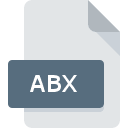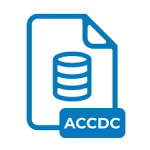.GDB File Extension

GPS Database File
| Developer | Garmin |
| Popularity | |
| Category | Database Files |
| Format | .GDB |
| Cross Platform | Update Soon |
What is an GDB file?
.GDB file extension holds significance as it represents a GPS Database File. These files serve as repositories of crucial geographic information, aiding various applications in mapping, routing, and location-based services.
Understanding their origin, structure, conversion methods, and compatibility across different operating systems is essential for navigating the digital landscape effectively.
More Information.
The .GDB file format emerged in the late 1990s, alongside the growing demand for digital mapping solutions. Its primary purpose was to provide a structured and efficient means of storing geographical data collected from GPS devices.
Early iterations of .GDB files were closely associated with Esri’s ArcGIS software, serving as the default database format for spatial data management.
Origin Of This File.
The .GDB file extension traces its origins back to the development of Geographic Information Systems (GIS) and Global Positioning System (GPS) technology.
Initially, GPS devices relied on proprietary software and file formats to store and manage location data. Esri, a prominent player in GIS software development, introduced the .GDB format as part of their ArcGIS suite, aiming to streamline the storage and retrieval of geographic data.
File Structure Technical Specification.
.GDB files exhibit a structured format optimized for storing various types of geographic data. At its core, a .GDB file functions as a database, organizing information into tables, feature classes, and attribute data.
These files leverage Esri’s geodatabase technology, which incorporates spatial indexing, relational databases, and advanced data management capabilities.
The technical specifications of .GDB files encompass elements such as:
- Feature classes: Representations of geographic features (points, lines, polygons).
- Attribute tables: Store descriptive information associated with spatial features.
- Spatial indexing: Enables efficient spatial queries and analysis.
- Relationships: Define connections between different datasets within the geodatabase.
- Metadata: Capture essential details about the dataset, including source, projection, and accuracy.
How to Convert the File?
Converting .GDB files to other formats can be achieved through various methods, depending on the desired output and available tools. Some common conversion options include:
- Export to Shapefile: Shapefiles (.SHP) are widely supported in GIS software. Most GIS applications offer functionality to export data from .GDB files to shapefile format.
- Geodatabase Conversion: Esri’s ArcGIS software provides utilities for converting .GDB files between different geodatabase formats, such as File Geodatabase (.GDB) to Personal Geodatabase (.MDB).
- Third-Party Tools: Several third-party software solutions offer conversion capabilities for .GDB files, allowing users to convert to formats like GeoJSON, KML, or CSV.
Advantages And Disadvantages.
Advantages:
- Comprehensive Data Management: .GDB files offer a robust framework for organizing and accessing spatial data, facilitating complex GIS workflows.
- Interoperability: While initially proprietary to Esri’s software, .GDB files can now be accessed and utilized by a variety of GIS applications, enhancing data sharing and collaboration.
- Advanced Analysis: The structured nature of .GDB files supports advanced spatial analysis techniques, empowering users to derive valuable insights from geographic data.
Disadvantages:
- Proprietary Nature: Despite increased interoperability, .GDB files still retain elements of proprietary technology, potentially limiting their accessibility for users outside the Esri ecosystem.
- Complexity: Managing .GDB files require familiarity with GIS concepts and software tools, posing a learning curve for novice users.
- File Size: Large .GDB files containing extensive geographic datasets may pose challenges in terms of storage, processing, and transmission.
How to Open GDB?
Open In Windows
- Users can utilize Esri’s ArcGIS software suite, which includes tools for viewing and editing .GDB files. Alternatively, third-party GIS applications compatible with Windows, such as QGIS or Global Mapper, offer support for .GDB files.
Open In Linux
- QGIS also caters to Linux users, providing a platform-independent solution for working with .GDB files. Additionally, GDAL (Geospatial Data Abstraction Library) offers command-line tools for accessing and converting .GDB files on Linux systems.
Open In MAC
- While Esri’s ArcGIS software is primarily designed for Windows, users can explore options like QGIS, an open-source GIS application available for macOS, which supports .GDB files.













